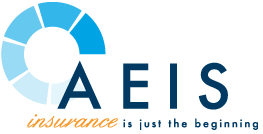Chief Compliance Officer at United Benefit Advisors
The Employee Retirement Income Security Act (ERISA) was signed in 1974. The U.S. Department of Labor (DOL) is the agency responsible for administering and enforcing this law. For many years, most of ERISA’s requirements applied to pension plans. However, in recent years that has changed, and group plans (called “welfare benefit plans” by ERISA and the DOL) now must meet a number of requirements.
Generally, ERISA applies to:
- Health insurance – medical, dental, vision, prescription drug, health reimbursement arrangements (HRAs) and health flexible spending accounts (FSAs) (Health savings accounts are not governed by ERISA but the related high deductible health plan is.)
- Group life insurance
- Disability income or salary continuance unless paid entirely by the employer from its general assets
- Severance pay
- Funded vacation benefits, apprenticeship or other training programs, day care centers, scholarship funds, and prepaid legal services
- Any benefit described in section 302(c) of the Labor Management Relations Act (other than pensions on retirement or death)
Cafeteria plans, or plans governed by IRS Code Section 125, allow employers to help employees pay for expenses such as health insurance with pre-tax dollars. Employees are given a choice between a taxable benefit (cash) and two or more specified pre-tax qualified benefits, for example, health insurance. Employees are given the opportunity to select the benefits they want, just like an individual standing in the cafeteria line at lunch.
Cafeteria plans are not ERISA plans, but many of the components benefit plans offered through a cafeteria plan are subject to ERISA. This is because a cafeteria plan serves as a vehicle for employees to elect benefits and pay for them. This can create confusion for plan sponsors when they determine what ERISA obligations they have in relation to their cafeteria plan, as well as to their individual offerings.
Only certain benefits can be offered through a cafeteria plan and not all benefits offered under a cafeteria plan can or will be subject to ERISA. Employers should take care to understand the distinctions and interplay between ERISA requirements and cafeteria plan requirements. Request UBA’s ACA Advisor, “ Reporting and Plan Documents Under ERISA and Cafeteria Plan Rules ” for comprehensive information on reporting, Form 5500, and requirements for plan documents.
We're here to help.
Schedule a free phone consultation today.
Latest Insights
Advanced Estate & Insurance Services, Inc. CA License #0M90887
Duda Website Design & SEO by RivalMind




